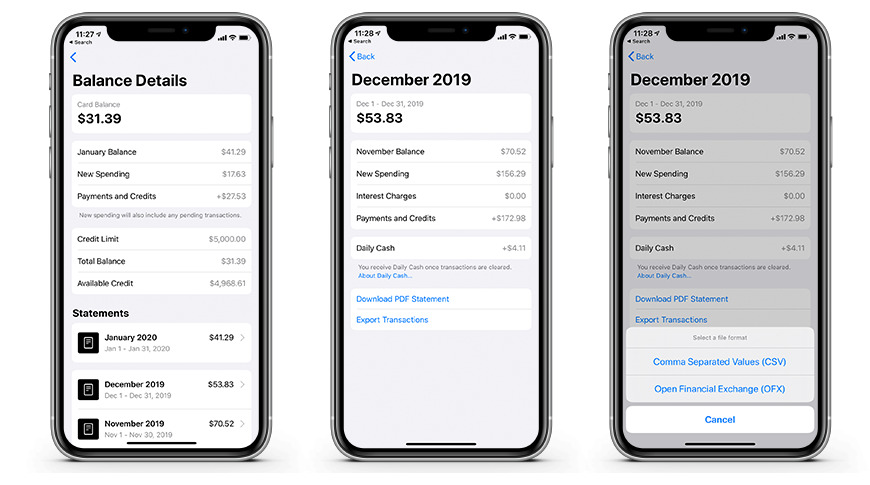Starting February 11, Apple Card cardholders are now able to export their Apple Card transactions into the OFX file format and import their data into third-party financial management apps.
In January 2020, Apple gave Apple Card cardholders the ability to export their monthly transactions to CSV — comma separated value — formats. Now, they've added the ability to export files to OFX — open financial exchange — formats as well.
Less widely supported than CSV, OFX files are a highly-standardized format and are often used to record transactions vendors, customers, and financial systems.
For those who use the Apple Card for business purposes, they may prefer to export their data in OFX. Programs such as Quicken, Numbers, and Mint can read OFX data.
- To export your Apple Card transaction data:
- Open the Wallet app.
- Tap Card Balance.
- Tap your desired monthly statement.
- Tap Export Transactions
- Select the format you'd like to export to.
Like before, you can only export data from a month that has generated a statement— meaning February's data won't be available to export just yet.
One of the biggest complaints that users of the Apple Card have had is that there's no way to import their transaction history into third-party money management apps, such as Mint. There's a reason for this— Apple's privacy policy. Apple is not too keen on third-party companies having access to customers' private financial data.
While cardholders still won't be able to give third-party apps direct access to their Apple Card transactions, they can manually export their transactions from the wallet app. Once exported, they can take that data wherever they'd like.
 Amber Neely
Amber Neely








 Wesley Hilliard
Wesley Hilliard
 Oliver Haslam
Oliver Haslam
 Marko Zivkovic
Marko Zivkovic
 William Gallagher
William Gallagher

 Sponsored Content
Sponsored Content
 Christine McKee
Christine McKee
 William Gallagher and Mike Wuerthele
William Gallagher and Mike Wuerthele









19 Comments
It's hard to believe that this short term exportation on a brand new card from a company that had never issued a credit card was such an overly dramatic issue for certain people on this forum.
I exported to OFX, but can't import the OFX file to Quicken. Quicken tells me to connect with the financial institution.